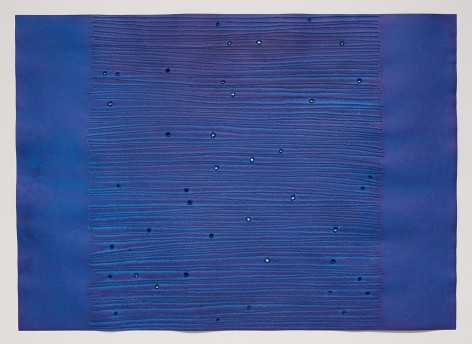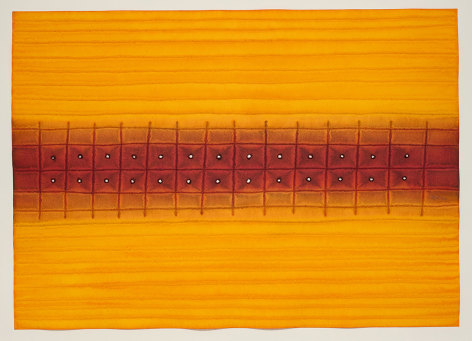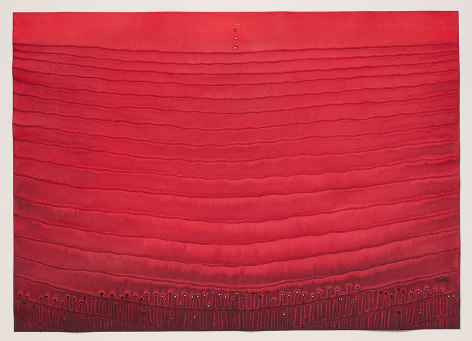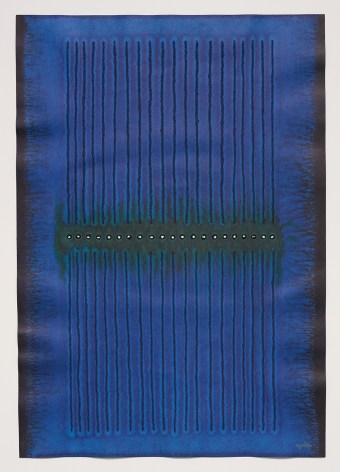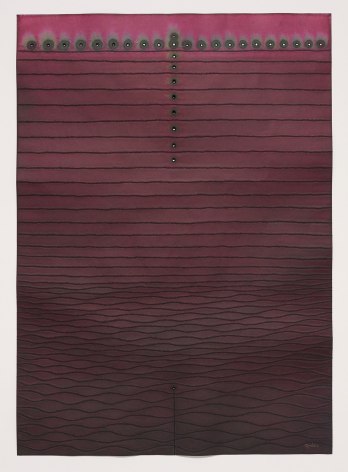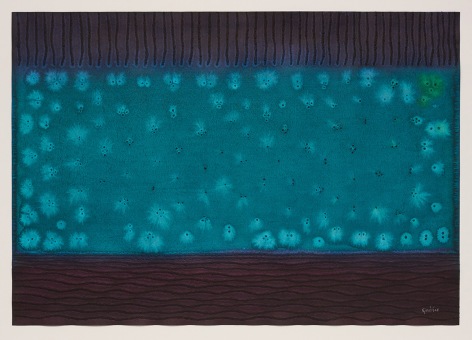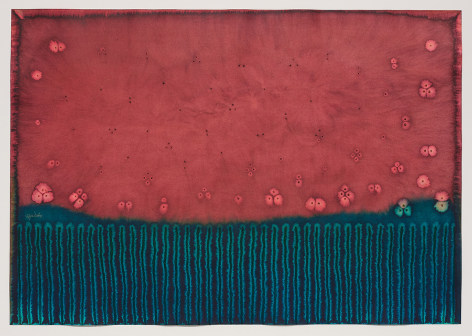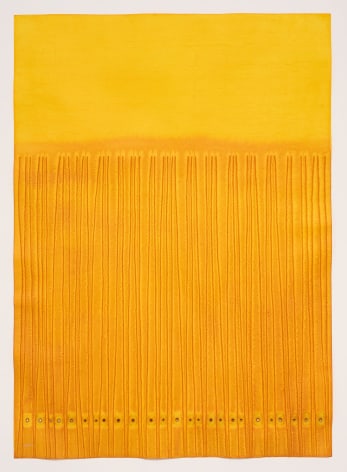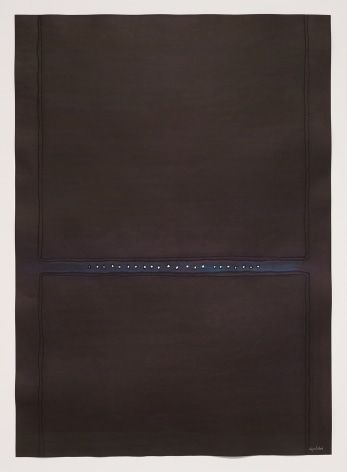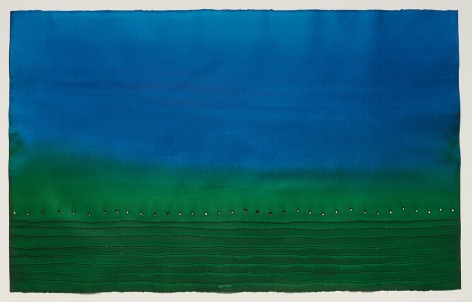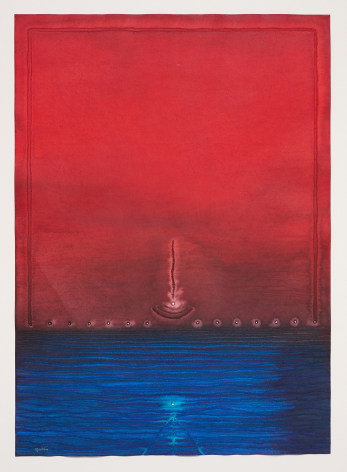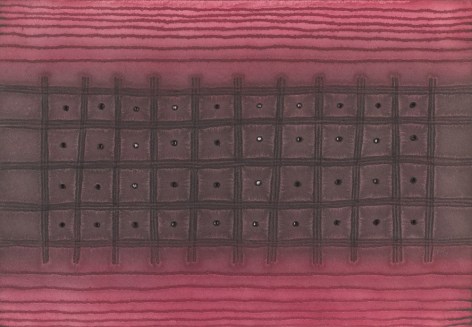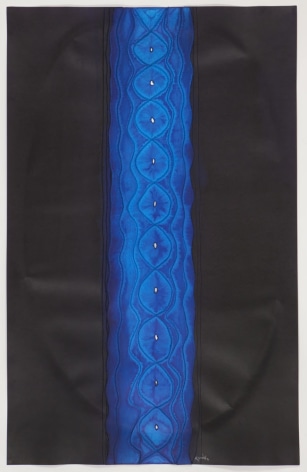
We are pleased to present a selection of paintings by Sohan Qadri (b. 1932, India – d. 2011, Canada), one of the only internationally acclaimed artists deeply engaged with spirituality. Qadri abandoned representation early on in his long career, incorporating Tantric symbolism and philosophy into his vibrantly colored minimalist paper works.
Sundaram Tagore met Soan Qadri in 1997 and has represented him internationally for nearly thirty years. When Sundaram Tagore Gallery opened in SoHo in 2000, Qadri was among the first of a select group of master artists Sundaram added to his roster. All were outside the dominant Western art-historical canon, but were in Sundaram’s estimation groundbreaking and working with a universal visual language that crossed geographic borders. He believed then, as he does now, that it was imperative to bring such cross-cultural work to a wide audience.
Since then, the gallery has organized more than fifty exhibitions of Qadri’s work across the United States, Europe and Asia, including Qadri’s first shows in New York (2004) and Hong Kong (2008). The gallery also organized exhibition collaborations with cultural organizations including Tibet House in New York (2003) and the Venice Biennale (2015).
Sundaram has placed Qadri’s work in the British Museum, Los Angeles County Museum of Art, Brooklyn Museum, Rubin Museum and Royal Ontario Museum, among others. Additionally, the gallery has produced numerous publications of Qadri’s work featuring scholarly essays by art historian Partha Mitter, critic Donald Kuspit and museum curator Tushara Bindu Gude. In 2011, Sundaram Tagore Gallery collaborated with the noted Italian fine-art publisher Skira Editore to produce Sohan Qadri: The Seer, a monograph with more than eighty color plates of Qadri’s canvas and paper works from the 1960s to 2011. It remains the definitive published record of his life and work.
Qadri, who spent much of his working life in Copenhagen, grew up in northern India, where he was exposed to Sufism, Hinduism and Sikhism on his family’s farm. He was particularly inspired by Vajryana or Tantric Buddhism, which emphasizes the notion of sunyata or emptiness.
In 1965, Qadri left India and began a series of travels that took him to East Africa, North America, Paris, Zurich and ultimately, Denmark. “I did not want to confine myself to one place, nation and community,” he told Times of India in a 2002 interview. “My approach to life has been universal, and so is my art.”
Although he began his career in the 1950s painting in oil on canvas, Qadri, in search of a process that would enable artmaking while in a meditative state, found his spiritual medium in paper. He covered sheets of heavy, bespoke paper with structural effects by soaking them in liquid and carving them in several stages while applying inks and dyes. In the process, he transformed the paper from a flat surface into an almost textile-like three-dimensional medium. The repetition of careful incisions was an integral part of his yoga practice.
“Sohan was a dear friend and it has been my honor to represent him for three decades,” says Sundaram Tagore. “I have never failed to be moved by the gravity of his work, which was so minimal yet so rich. He imbued it with his spiritual beliefs. He was a painter, poet and Tantric yogi, and without a doubt, one of the world’s preeminent spiritual artists.”
ABOUT SOHAN QADRI
Qadri was born in Punjab, India, in 1932. At age seven, he was initiated into yogic practice and as a teenager ran away to a Tibetan Buddhist monastery in search of a higher truth—experiences that would shape his art and life. He attended from the Government College of Art, Simla in the mid-1950s, and emerged as part of a generation of post-independence Indian modernists that included M. F. Husain, S. H. Raza, K. H. Ara, Ram Kumar and Sailoz Mookherjea.
Qadri participated in more than forty one-person shows, in Bombay, Vienna, Brussels, London, Oslo, Stockholm, Montreal, Toronto, Los Angeles and New York. He distilled Tantric symbolism into his own abstract, modernist language using broad areas of open color, seemingly capturing the northern landscape and sky of his Scandinavian surroundings.
Qadri’s work is in the collections of the British Museum, London; Brooklyn Museum and The Rubin Museum of Art, New York; Los Angeles County Museum of Art, California; Peabody Essex Museum, Massachusetts; Royal Ontario Museum, Toronto; and National Gallery of Modern Art, New Delhi, as well as the private collections of Cirque du Soleil, Heinrich Böll and Dr. Robert Thurman.

